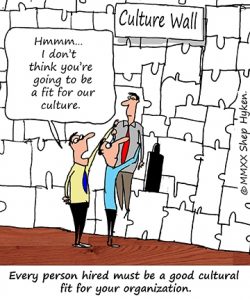Marketing automation has forever changed the way B2B marketing is conceived and executed. In fact, the shiny new tactical capabilities that a marketing automation platform brings to the table can be so exciting that they often distract from deeper, more strategic planning that is essential for marketing automation to be effective. Well-intentioned CMO’s may find themselves signing for a fancy new marketing automation platform only to wake up 18 months later in the proverbial drip-campaign gutter with little memory of how they got there and little to no attributable revenue to show for it.

Developing a comprehensive Demand Generation Strategy is not a simple task. The three biggest mistakes a company can make in the development of their strategy are some of the most fundamental. Taking a product-centric approach, failing to conduct due diligence via deep buyer research, and planning in departmental silos can all derail the success of a program.
Product-centric planning-
Contrary to what you might want to believe, your demand generation program isn’t about your company. Customers buy your product because they are facing a unique set of challenges that they have decided you are best suited to help them overcome. Those challenges are what make your company possible, and it is those challenges that your demand generation program should serve. Too many organizations focus all of their energy on why their product is better than a competitor’s, but that type of content only speaks to prospects who have already decided they need your product. By starting with fundamental (customer-focused) pain points, your demand generation program speaks to potential buyers who might not know your product is even a viable solution. This may seem obvious, but separating yourself from the product you spend every day marketing can be the most difficult part of the process.
Assuming you know your buyer-
A buyer-centric Demand Generation Strategy necessitates buyer research. That doesn’t mean sending a survey, or interviewing two or three of your best customers or even asking sales what they think. It means conducting customer interviews in the double digits, workshops with everyone from customer service to sales reps, and utilization of the copious third party research already available. Plan on setting aside several days for your team to review the findings of that research and map out a distinct buying process, as well as the pain points and priorities of buyers in each step of that process. The results will probably surprise you. As mentioned above, it is crucial that you step outside of your organization for the research. Otherwise, you run the risk of bias and missing something significant.
Planning in silos-
The success of a demand generation program is ultimately measured in revenue. A prospect starts in marketing’s world, then crosses to sales, and eventually may come to reside in the domain of customer service. If your Demand Generation Strategy is developed without input from every department involved in your organization, it is doomed from the start. Not only do sales and customer service have valuable insight about buyers, they are crucial stakeholders in the process. If they do not feel involved in the formation of a strategic initiative, they have no incentive to support it. Do more than leverage their experience on the front lines. Checkpoint your research findings and process models with them before the strategy is finalized. Not only will you get valuable feedback, you will give them a sense of ownership in the program. Silos need to be broken down for an effective Demand Generation Strategy.
Although some of this seems obvious, overlooking these key areas can lead to a poorly planned and an under-performing Demand Generation Strategy. Focus on building the strategy, first and use that to guide any and all future programs. Successful demand generation is focused on strategy and all that goes into understanding the buyer…not leading with the technology.
(211)
Report Post






